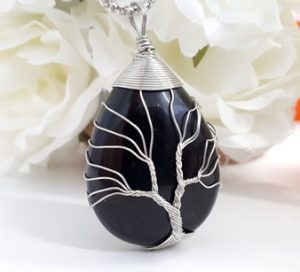
Transform Your Space: A Beginner’s Guide to Feng Shui in Your Home
Feng Shui, an ancient Chinese practice rooted in the belief that our environment can affect our well-being and fortune, invites us to design our spaces thoughtfully. By harmonizing energy flow (or "Chi") within your home, you can create a serene and supportive environment. Whether you’re looking to invite prosperity, improve relationships, or simply enhance tranquility, Feng Shui offers practical tips to transform your space beautifully and effectively.
1. Understand the Bagua Map
The Bagua map is a foundational tool in Feng Shui. It divides your space into eight key areas, each representing different aspects of life:
- Wealth & Prosperity
- Fame & Reputation
- Love & Relationships
- Family & Health
- Center (Health)
- Creativity & Children
- Knowledge & Wisdom
- Career & Life Path
To start, lay the Bagua map over your floor plan. The main entrance, where energy enters your home, usually aligns with your Career area. from there, identify which sections of your home correspond to these life areas. Pay attention to what rooms and items occupy these zones, so you can effectively enhance their energies.
2. Declutter for Clear Energy Flow
Clutter is the enemy of good energy flow and can stagnate Chi. Start your Feng Shui transformation by decluttering your space:
- Room by Room: Focus on one area at a time. Identify items you no longer need or love and donate or discard these.
- Hidden Clutter: Don’t forget about drawers and closets. Clear them out to ensure energy can flow unobstructed.
- Organizational Techniques: Use storage solutions that encourage organization, such as boxes and baskets, to keep surfaces clear.
A decluttered space not only feels more spacious but also invites fresh energy into your home.
3. Choose Your Colors Wisely
Colors play a crucial role in setting the mood and energy of a space. In Feng Shui, different colors correspond to various elements:
- Red: Represents Fire—passion and energy. Ideal for motivation zones, like your office.
- Green: Represents Wood—growth and harmony. Perfect for living spaces or a garden view.
- Blue: Represents Water—calmness and tranquility. Great for bedrooms to foster relaxation.
Analyze your space and ensure the colors align with the energies you want to promote. Incorporating new color through paint, decor, or accessories can reinvigorate your home.
4. Optimize Furniture Placement
Furniture arrangement has a significant impact on energy flow:
- Command Position: Arrange your furniture so that you can see the entryway while sitting—this position provides a sense of security and control over your environment.
- Flow and Space: Avoid blocking pathways. Ensure that there are clear walks between pieces to encourage smooth movement.
- Functionality and Comfort: Choose furniture that not only looks good but also feels good to use. Soft, rounded edges foster a cozy atmosphere, while sharp corners can create discomfort.
5. Incorporate Natural Elements
Nature is a cornerstone of Feng Shui. Incorporating natural elements brings vibrant energy into your home:
- Plants: Bringing greenery indoors promotes life and healing energy. Choose plants like jade or bamboo, which symbolize prosperity and luck.
- Water Features: Consider small fountains or aquariums; the sound of water regulates energy flow and invites abundance.
- Natural Light: Maximize natural light in your home to invigorate your space. Use sheer curtains to allow sunlight while maintaining privacy.
Each element can refresh and energize the atmosphere.
6. Reflect and Ground Your Space
Mirrors and grounding materials can enhance or redirect Chi flow:
- Mirrors: Use mirrors to expand space and reflect light. Avoid placing them directly opposite doors, which can push energy back out.
- Earthly Materials: Incorporate stones, ceramics, or wood to connect your space with nature, providing a grounding effect.
Make deliberate choices with these elements to create balance and harmony.
FAQs
Q: Where can I find Feng Shui accessories for my home?
A: Many home and lifestyle stores like Target, HomeGoods, or online marketplaces like Amazon offer a variety of Feng Shui products such as crystals, plants, and decor. Specialty stores focused on holistic living or Asian markets often carry authentic items too.
Q: What plants are recommended for Feng Shui?
A: Good choices include money trees (Pachira aquatica), pothos, jade plants, and bamboo. These plants are said to attract positive energy and prosperity.
Q: How often should I reassess my Feng Shui?
A: It’s advisable to reassess your Feng Shui about once a season or whenever you feel stagnant energy in your space. Changes in life circumstances often require shifting energies to match your current needs.
Q: Can I practice Feng Shui on a budget?
A: Absolutely! Many Feng Shui principles can be accomplished through decluttering, rearranging furniture, and using DIY decor, allowing you to transform your space without significant expense.
Transforming your environment through Feng Shui can yield remarkable improvements in your overall well-being and happiness at home. Start small, implement easy changes, and watch how your space reflects the serenity and prosperity you desire.







